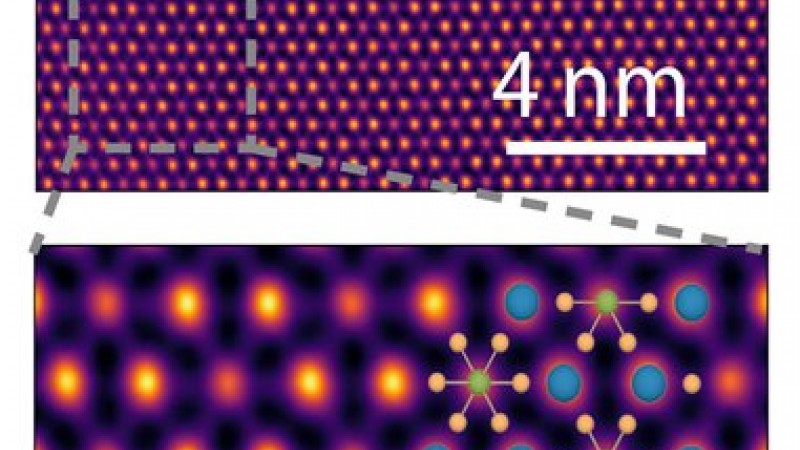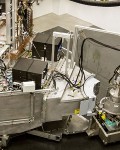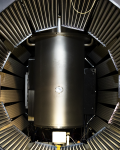Article courtesy of Caltech, by Robert Perkins
The crystalline solid BaTiS3 (barium titanium sulfide) is terrible at conducting heat, and it turns out that a wayward titanium atom that exists in two places at the same time is to blame.
The discovery, made by researchers from Caltech, USC, and the Department of Energy's Oak Ridge National Laboratory (ORNL), was published on November 27 in the journal Nature Communications. It provides a fundamental atomic-level insight into an unusual thermal property that has been observed in several materials. The work is of particular interest to researchers who are exploring the potential use of crystalline solids with poor thermal conductivity in thermoelectric applications, in which heat is directly converted into electric energy and vice versa.
"We have found that quantum mechanical effects can play a huge role in setting the thermal transport properties of materials even under familiar conditions like room temperature," says Austin Minnich, professor of mechanical engineering and applied physics at Caltech and co-corresponding author of the Nature Communications paper.
Crystals are usually good at conducting heat. By definition, their atomic structure is highly organized, which allows atomic vibrations—heat—to flow through them as a wave. Glasses, on the other hand, are terrible at conducting heat. Their internal structure is disordered and random, which means that vibrations instead hop from atom to atom as they pass through.
BaTiS3 belongs to a class of materials called Perovskite-related chalcogenides. Jayakanth Ravichandran, an assistant professor in USC Viterbi's Mork Family Department of Chemical Engineering and Materials Science, and his team have been investigating them for their optical properties and recently started studying their thermoelectric applications.
"We had a hunch that BaTiS3 will have low thermal conductivity, but the value was unexpectedly low. Our study shows a new mechanism to achieve low thermal conductivity, so the next question is whether the electrons in the system flow seamlessly unlike heat to achieve good thermoelectric properties," says Ravichandran.
The Spallation Neutron Source is a DOE Office of Science User Facility. UT-Battelle LLC manages ORNL for the DOE Office of Science. The Office of Science is the single largest supporter of basic research in the physical sciences in the United States and is working to address some of the most pressing challenges of our time. For more information, please visit http://science.energy.gov/.







